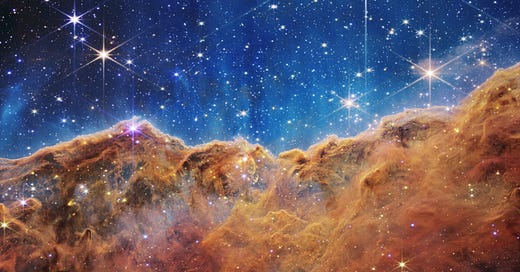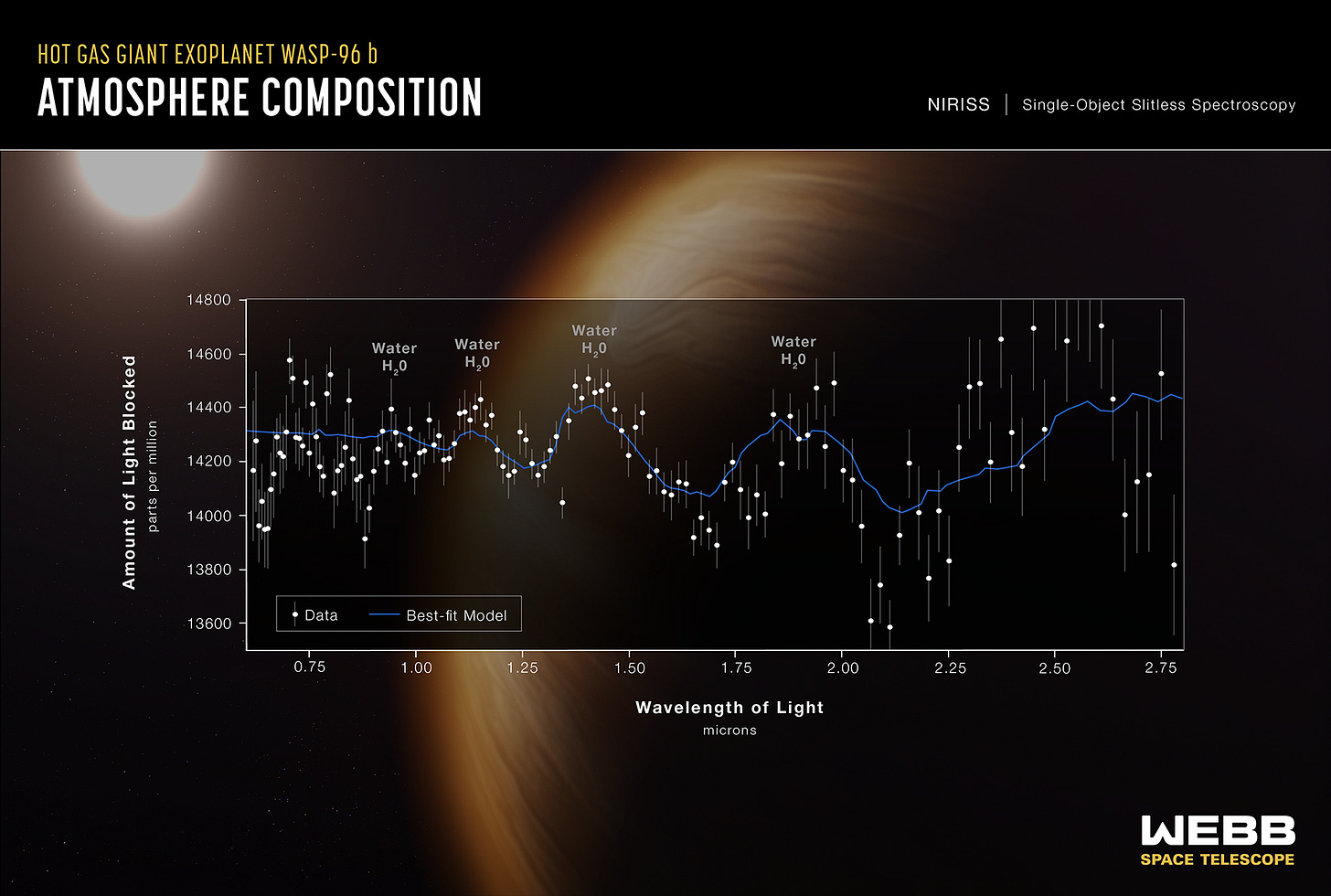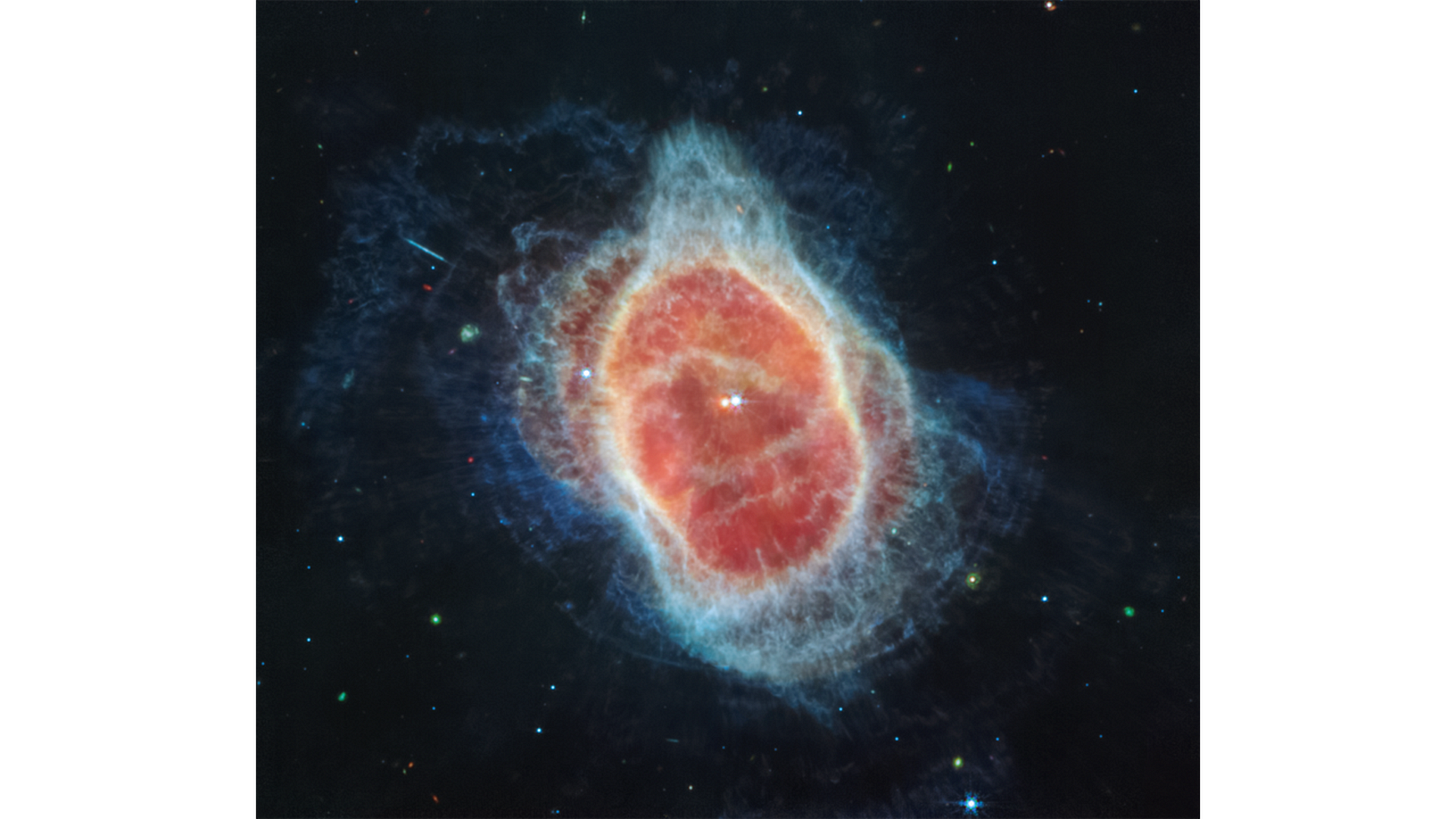First images from the Webb telescope reveal the Universe as we have never seen it
ESA / Space in Member States / France
These highly anticipated images hint at a treasure trove of discoveries to come.
We are well into a new era in astronomy as the world discovers for the first time the fantastic capabilities of the NASA/ESA/CSA James Webb Space Telescope. The telescope's first color images and spectroscopic data were released today, revealing a spectacular array of previously elusive cosmic features.
Webb's first observations tell the story of the Universe through every phase of cosmic history - from nearby exoplanets to the most distant observable galaxies in the early Universe, and everything in between.
"Today, we present the world with a revolutionary image of the cosmos from the James Webb Space Telescope - a perspective the world has never seen before," said NASA Administrator Bill Nelson. "These images, including the deepest ever taken of our Universe, show us how Webb will help us answer questions we haven't even asked ourselves yet; questions that will help us better understand our Universe and humanity's place in it."
"The Webb team's incredible success is a reflection of what NASA does best. We take dreams and turn them into reality for the benefit of humanity. I can't wait to see the discoveries we make - the team is just getting started!"
"These first Webb images and spectra are a huge celebration of the international collaboration that made this ambitious mission possible," said Josef Aschbacher, ESA Director General. "I want to thank everyone involved in commissioning this magnificent telescope and releasing these incredible first images from Webb - you have made this historic day a reality."
The images and spectra released today demonstrate the cutting-edge capabilities of Webb's four science instruments and confirm that future observations will revolutionize our understanding of the cosmos and our own origins.
"This is the beginning of a new era in observing the Universe and it will allow us to make exciting scientific discoveries with Webb," says ESA Science Director Günther Hasinger. "As we now begin our science operations, I know that the European astronomical community is eager to see the results of the observing time they have gained for Webb's first year."
"Working on this mission has been one of the most exciting and rewarding moments of my career," says Macarena Garcia Marin, ESA's MIRI instrument science manager. "My colleagues and I are excited to see what Webb can do and what surprises await us with its unprecedented combination of sharpness and sensitivity."
Webb's first observations were selected by a panel of representatives from NASA, ESA, CSA and the Space Telescope Science Institute:
SMACS 0723: To truly understand our origins, we must trace galaxies back to the beginning. This deep field uses the gravitational lensing of a galaxy cluster to reveal some of the most distant galaxies ever detected. This image only scratches the surface of Webb's capabilities in studying deep fields
WASP-96b: Studying other planetary systems will help astronomers determine how typical or atypical our Solar System is. Webb has detected water molecules on an exoplanet and will now study hundreds of other systems to understand what other planetary atmospheres are made of.
The Southern Ring: From the birth to the death of a planetary nebula, Webb can explore the dust and gas of aging stars that may one day become a new star or planet
Stephan's Quintet: Stars are born from and contribute massive amounts of gas and dust, swirling around galaxies. The dust evolves over time, and Webb can study nearby, dynamically interacting galaxies to see the dust in action. Now scientists can get a rare glimpse, in unprecedented detail, of how interacting galaxies trigger star formation in each other and how the gas in those galaxies is affected.
La nébuleuse de la Carène: En observant cette région de formation stellaire et d’autres comme elle, les scientifiques peuvent, grâce à Webb voir des étoiles nouvellement formées et étudier le gaz et la poussière qui les ont fabriquées.
The release of the first Webb images and spectra kicks off Webb's science operations. Astronomers around the world will have the chance to observe a variety of features -from objects in our Solar System to the early universe- using Webb's four instruments.
The James Webb Space Telescope was launched on December 25, 2021, on an Ariane 5 launch vehicle from Europe's Spaceport in French Guiana, South America. After completing the most complex and challenging deployment ever conducted in space, Webb underwent months of commissioning, during which its mirrors were meticulously aligned and its instruments calibrated for its space environment and prepared for science.
About Webb
The James Webb Space Telescope is the world's first scientific space observatory. It will solve the mysteries of our Solar System, observe distant worlds around other stars, and probe the mysterious structures and origins of our universe and our place in it. Webb is an international program led by NASA with its partners, the European Space Agency (ESA) and the Canadian Space Agency.
ESA's major contributions to this mission are the NIRSpec instrument, the MIRI optical package, and the provision of launch services and personnel to support the operational portion of the mission. In return for these contributions, European scientists will have at least 15% of the total observing time, as was the case with the NASA/ESA Hubble Space Telescope.
( source : https://www.esa.int/Space_in_Member_States/France/Les_premieres_images_du_telescope_Webb_revelent_l_Univers_comme_nous_ne_l_avons_jamais_vu )

















